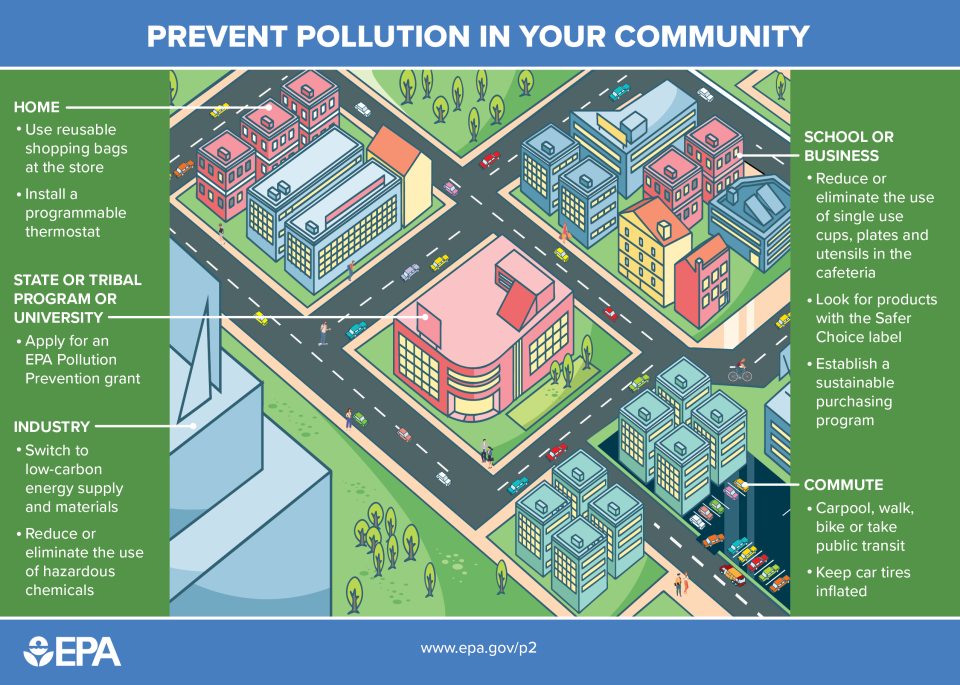What You Can Do About Pollution Prevention
P2 Resources for Concerned Citizens
Pollution prevention is not just the responsibility of businesses and government agencies. Citizens can help solve environmental problems by reducing pollution at the source, before it is created.
We can all apply pollution prevention in our daily lives. Whether in the home and garden, at the supermarket or on the road, we can make pollution prevention choices every day in order to protect the environment, save money and conserve natural resources.
The resources below can help you be more aware of the many ways to prevent pollution:

Water
Home
- How to save energy in your home.
- Learn about Greener Living: our actions impact the environment. Each thing we do can help or hurt our planet in many ways. EPA has tools to help you learn and understand the issues and reduce your environmental footprint.
- Learn more about P2 at home and at work from the P2 Week web site.
